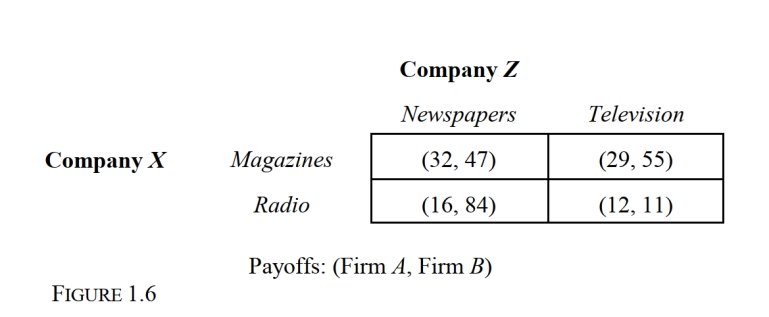Multiple Choice

-Consider the advertising game depicted in Figure 1.6 in which payoffs are in thousands of dollars. If larger payoffs are preferred, this is an example of a:
I. Game in which both players have a strictly dominant strategy.
II. Prisoner's dilemma.
III. Two-player, noncooperative, static game.
Which of the following is correct?
A) I only.
B) II only.
C) III only.
D) II and III only.
E) I, II, and III.
Correct Answer:

Verified
Correct Answer:
Verified
Q20: <img src="https://d2lvgg3v3hfg70.cloudfront.net/TBR1330/.jpg" alt=" -Refer to Figure
Q21: <img src="https://d2lvgg3v3hfg70.cloudfront.net/TBR1330/.jpg" alt=" -Refer to noncooperative,
Q22: The normal-form of a one-time, static game
Q23: A two-player, static game is one in
Q24: Which of the following assumptions about static
Q26: A Nash equilibrium:<br>A) Results in a payoff
Q27: A static game:<br>A) Is the same thing
Q28: <img src="https://d2lvgg3v3hfg70.cloudfront.net/TBR1330/.jpg" alt=" -Consider the one-time,
Q29: The modern version of game theory can
Q30: Game theory attempts to explain:<br>A) Profit maximization.<br>B)